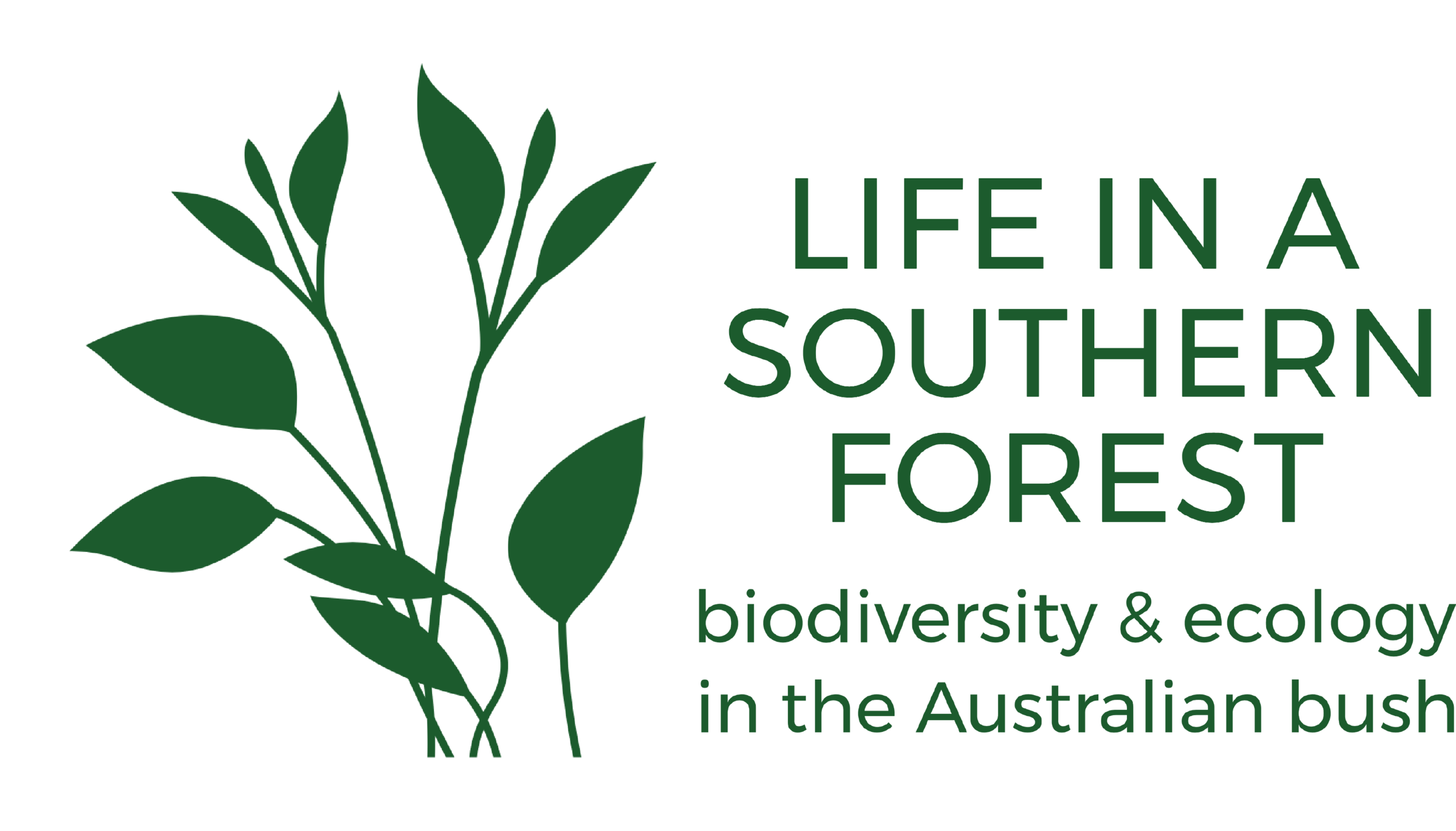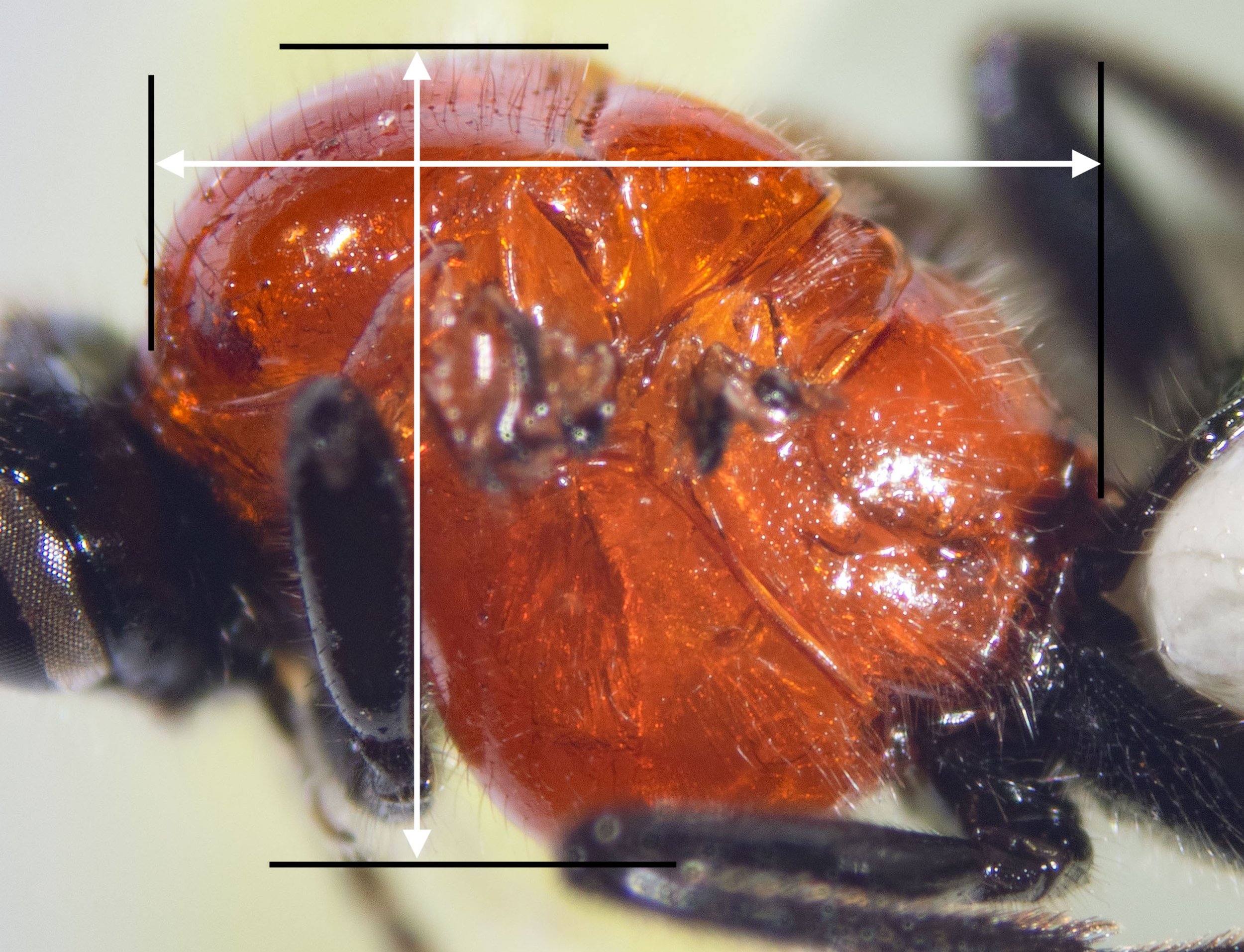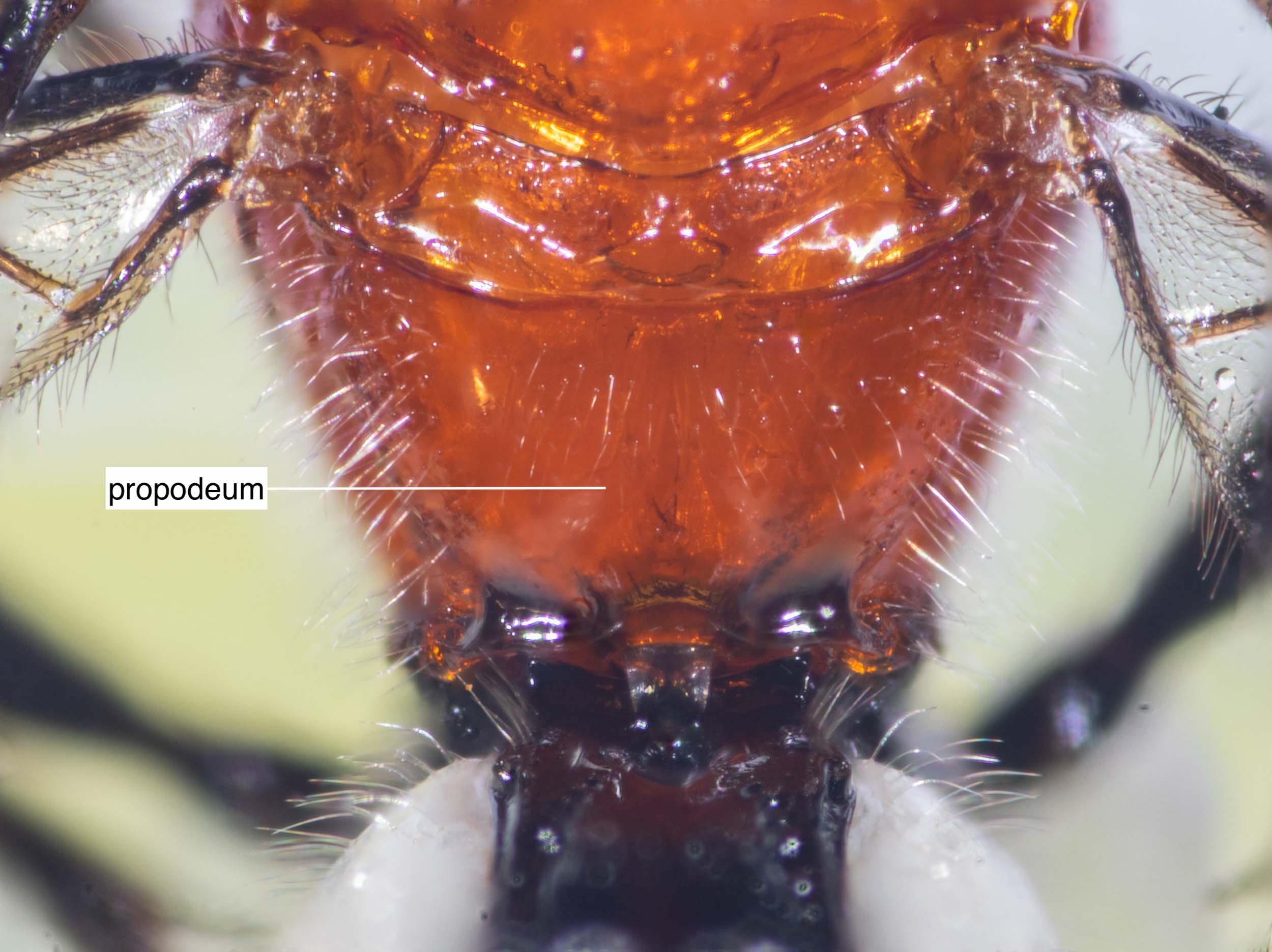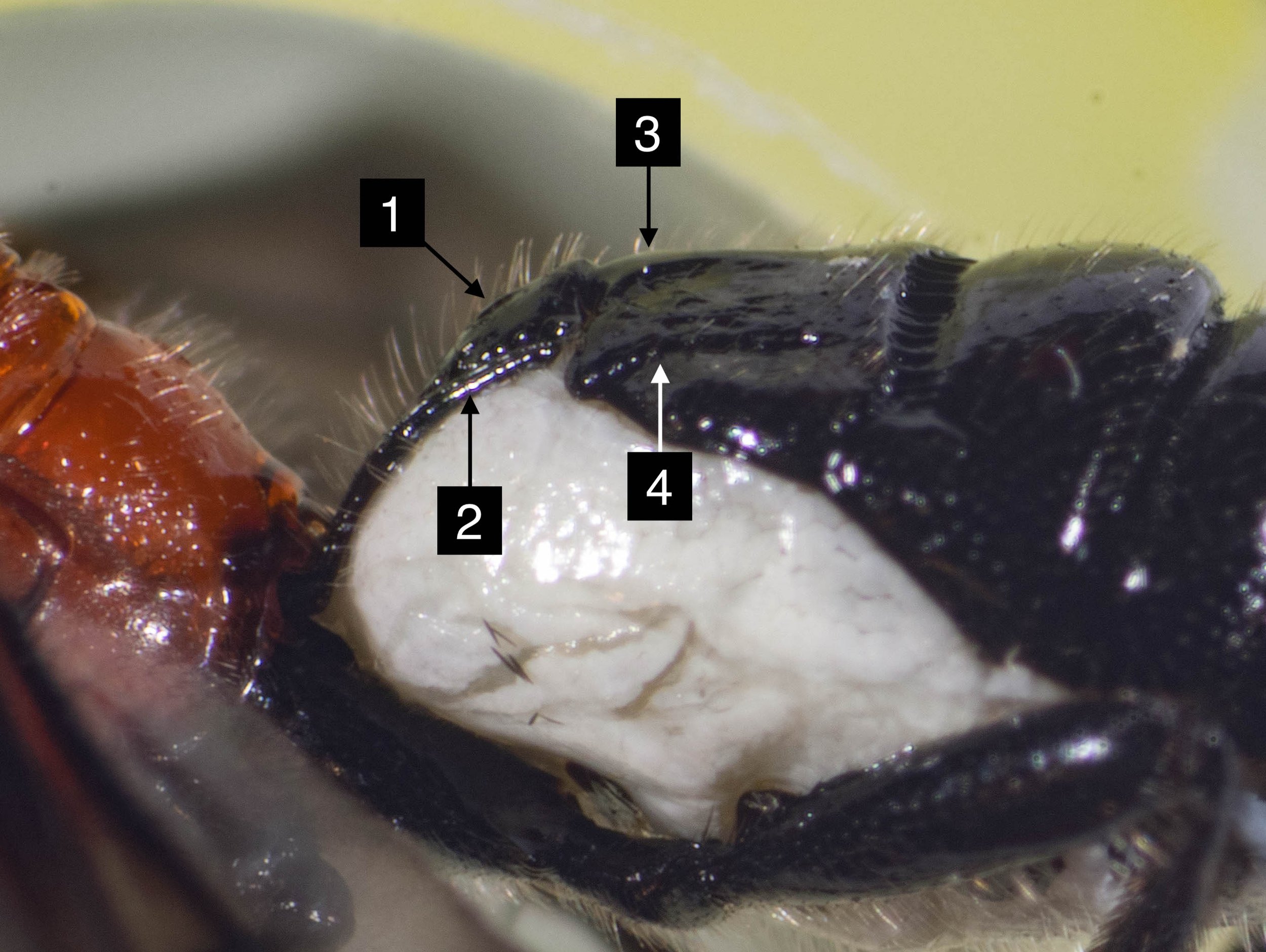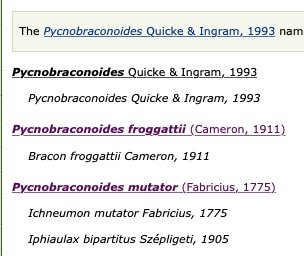Pycnobraconoides (Braconidae: Braconinae)
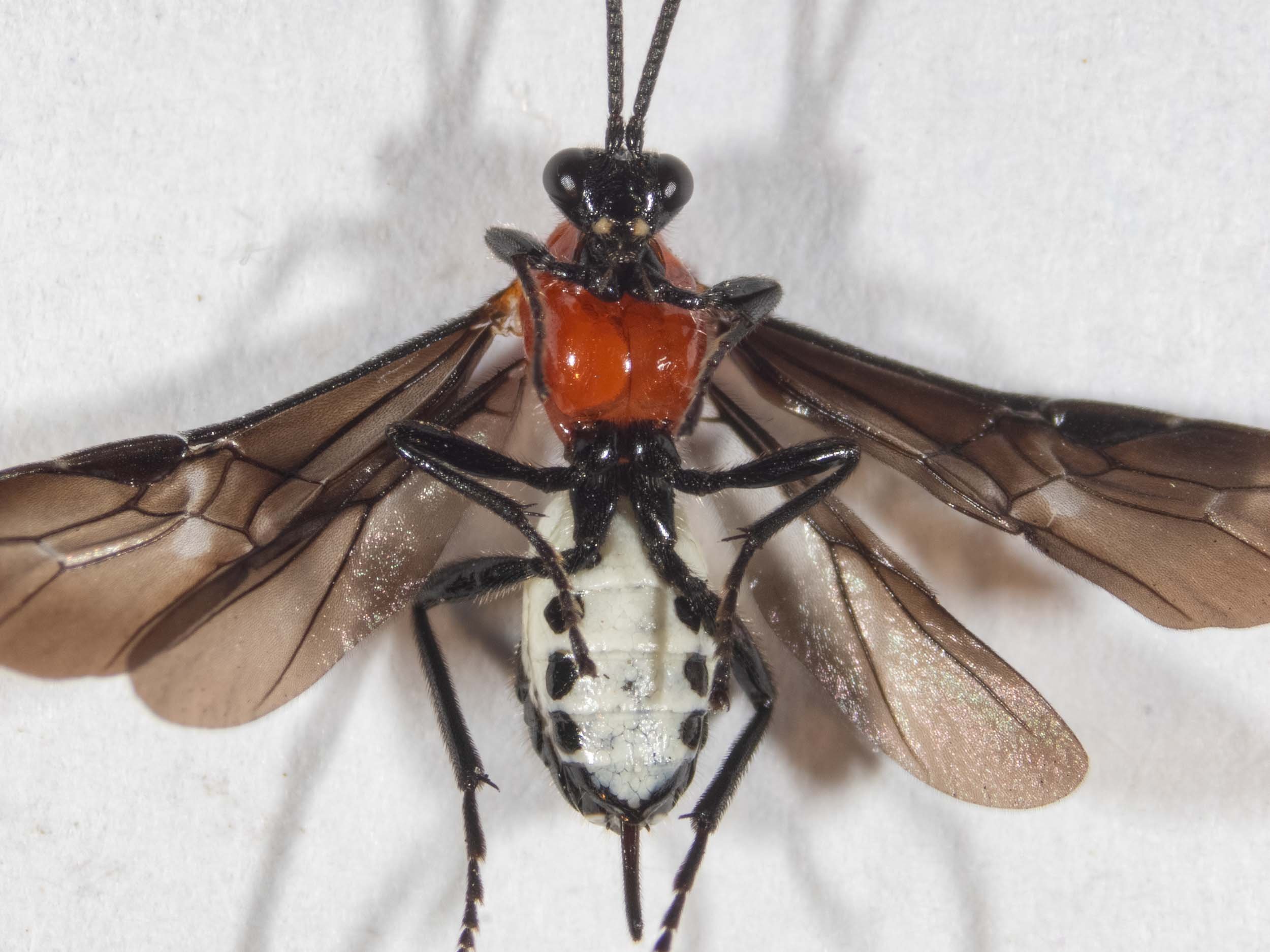
Workbook
These squat little braconids with the wide, black head, short ovipositor and dark wings are perhaps the most visibly common in the forest. We regularly see them flying amongst low vegetation, including during the cooler months. Having spent last week identifying a very different, and less commonly seen braconid (Vipiellus), I was keen to see if I could put a name to these ones too.
Collection ID: 2310A & 2310B. Collected 1st October, 2023. Imaged within 4 days of collection.
Pycnobraconoides
Several obvious, distinguishing features
Matches the original description of the genus Pycnobraconoides (Quicke & Ingram, 1993). Of particular note – and recognisable in field photos! …
ivory-white mandibles (only darkened at the tip)
very transverse head shape
metasoma short (‘robust’)
ovipositor relatively short
On this basis alone, I think I’ll be able to call many of our earlier field photos to genus.
Extracted from page 320:
Quicke, D.L.J & Ingram, S.N. 1993. Braconine wasps of Australia. Memoirs of the Queensland Museum, 33(1): 299-336
Details
As confirmation, the wasps are a near-perfect match with the full genus description. Compare the details in the extract with the annotated images below.
Total length = 6mm (or slightly more). 44 flagellomeres. Terminal flagellomere pointed (‘acuminate’).
Short, slightly longer dorsally than ventrally.
Scape not apico-medially emarginate.
Frons with a well-developed mid-longitudinal sulcus.
Mandibles ivory-white, except for darker apex. Face smooth & shiny, setose.
Mandibles ivory-white, except darked at tip. Eyes with setae & emarginate (arrows).
Frons (arrows) densely hairy, impressed medially.
Head very transverse.
Note: I don’t know how to interpret the following statement:
”horizontal length of eye approximately 2.5 times longer than horizontal length of head behind eye” (Quicke & Ingram, p 320)
Mesosoma shiny, approximately 1.2 times longer than high.
Mesosoma smooth and shiny, largely glabrous.
Scutellar sulcus narrow, crenulate.
Mesopleura smooth, unfeatured … no precoxal suture/sulcus apparent.
Mesopleural suture smooth.
Mesosoma smooth and shiny.
Mesoscutum largely glabrous, except for along line of notauli.
Metanotum without apparent median carinae.
Median area of metanotum not carinate.
Propodeum without carinae.
Forewing: second submarginal cell long, vein 3-SR 0.7 times length of vein SR-1.
Hindwing: vein 1r-m much shorter than vein SC+R1. Base of wing evenly setose (no glabrous regions).
Vein 1-SR+M more or less straight.
Vein 2-SR+M short, more or less interstitial.
Veins C+SC+R and 1-SR forming an angle of approximately 75 degrees (dotted yellow circle)
Vein r-m unsclerotized.
Vein cu-a interstitial … (Initially I didn’t know how to interpret ‘interstitial’, but I’ve since found that Quicke (1987) uses the term to describe a clear break in the vein.)
Apex on vein C+SC+R with only one especially thickened bristle. Base of wing evenly setose (i.e. no large, glabrous patches … I don’t think the fold line and bulla count)
Tarsal claws subequal, posterior slightly longer).
Tibia slender.
Tarsal claws subequal, anterior slightly shorter).
Tibia slender.
Metasoma short, robust, largely smooth.
T3-5 with posterior margins rounded in profile.
Ovipositor robust, part exserted beyond apex of metasomal slightly shorter than medial length of metasomal tergite 2+3
T1 with: raised median area (1), strongly sloping anteriorly; dorsolateral carinae (2).
T2 with: slightly raised median area (3); anterolateral groove (4).
T1 with: raised median area (1) sculptured posteriorly, smooth anteriorly; dorsolateral carinae (2).
T2 wide, with: smooth, slightly raised and elongate median area anteriorly (3); anterolateral, sub-parallel grooves (4).
Ovipositor robust and without a pre-apical dorsal nodus. Gradually widens from base to near apex, then narrowing just before tip.
So, which species? Perhaps P. mutator … perhaps.
AFD currently lists just two species: P. froggattii (Cameron, 1911), & P. mutator (Fabricius, 1775). Both were included in the generic description (Quicke & Ingram, 1993).
There are several records of Pycnobraconoides on BOLD, and the only species-level assignment is P. mutator. One of these specimens seems a match in colour and overall shape (link), although finer structural details are not shown for the BOLD specimens.
Image from BOLD:
Specimen Depository: Centre for Biodiversity Genomics. Photography & Collector: Graeme Cocks. Specimen identification: Donald L.J. Quicke. Project Manager: CBG Project Management Team
Link to record on BOLD
Extract from page 35 of:
Szépligeti, G.V. 1905. Exotische Braconiden aus den Aethopischen, Orientalischen und Australischen Regionen. Annales Historico-Naturales Musei Nationalis Hungarici (Zoologica) 3: 25-55
Extract from page 339 of:
Cameron, P. 1911. On a collection of parasitic Hymenoptera (chiefly bred), made by Mr W. W. Froggatt, F.L.S., in New South Wales, with descriptions of new genera and species. Part I. Proceedings of the Linnean Society of New South Wales 36: 333-346
So it may well be P. mutator. It doesn’t seem a match for P. froggattii, in which the pro- and mesothorax are black (only the scutellum red). However, without a closer look or better description of P. mutator, I’m not confident to call it to species level.
Here are a few extra shots, including images of the second individual (2310B)
References
Quicke, D.L.J. 1987. The Old World genera of braconine wasps (Hymenoptera: Braconidae). Journal of Natural History, 21(1): 43-157.
Quicke, D.L.J. & Ingram, S.N. 1993. Braconine wasps of Australia. Memoirs of the Queensland Museum, 33(1): 299-336 (link to paper on Biodiversity Heritage Library)
van Achterberg, C. 1988. Revision of the subfamily Blacinae Foerster (Hymenoptera, Braconidae). Zoologische Verhandelingen, 249 (1): 1-324
van Achterberg, C. 1993. Illustrated key to the subfamilies of the Braconidae (Hymenoptera: Ichneumonoidea). Zoologische Verhandeligen, 283: 1-189 link via Research Gate
This is a workbook page … a part of our website where we record the observations and references used in making species identifications. The notes will not necessarily be complete. They are a record for our own use, but we are happy to share this information with others.
